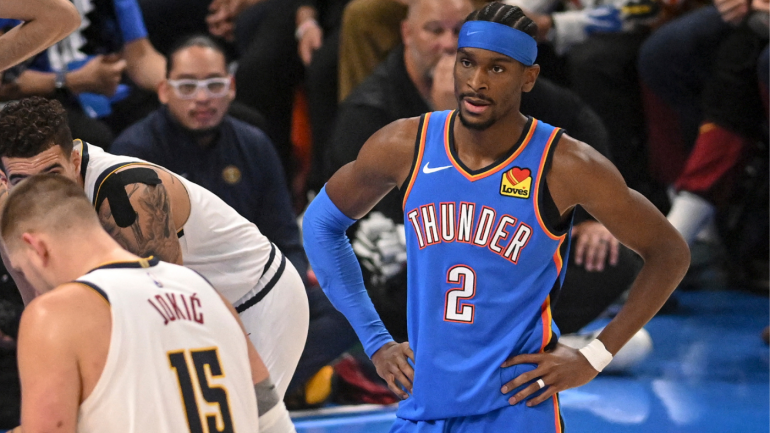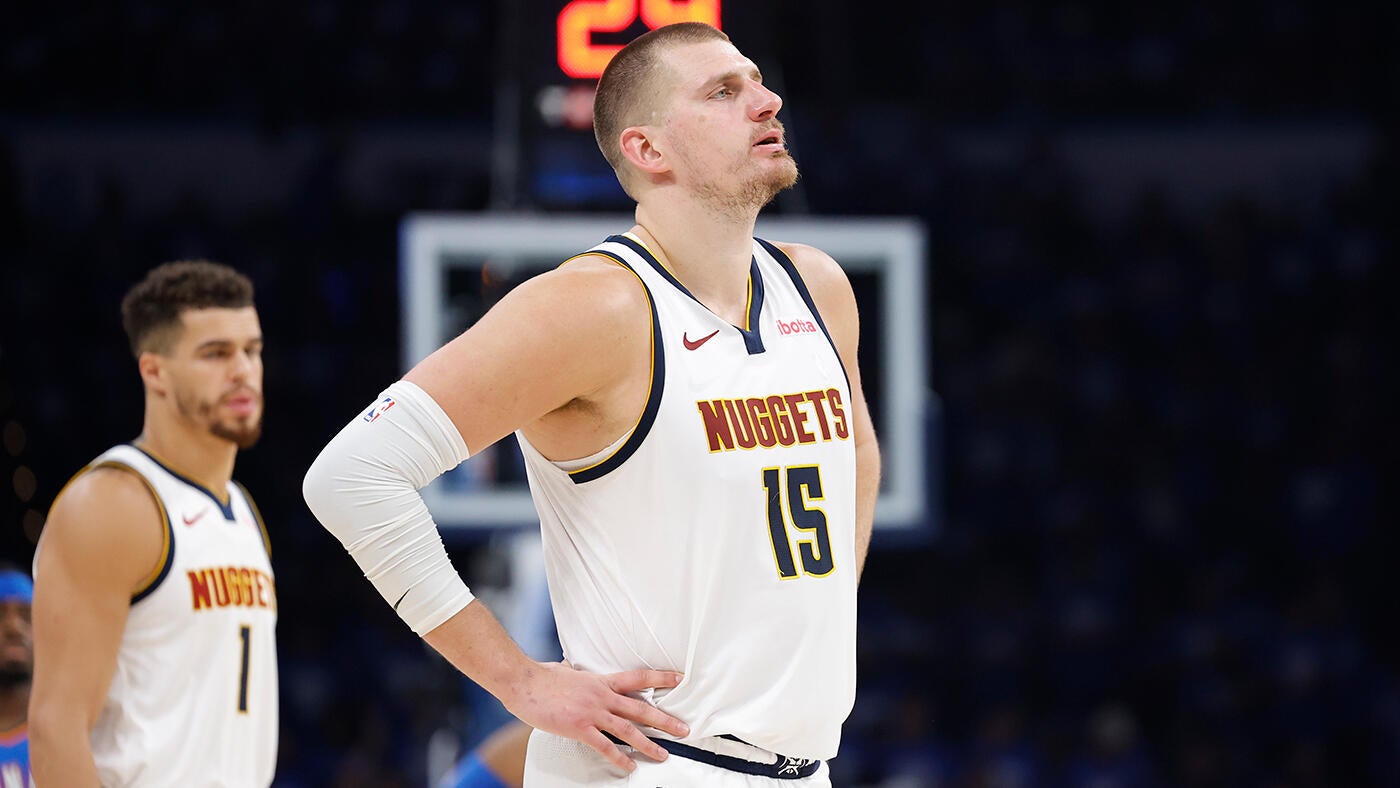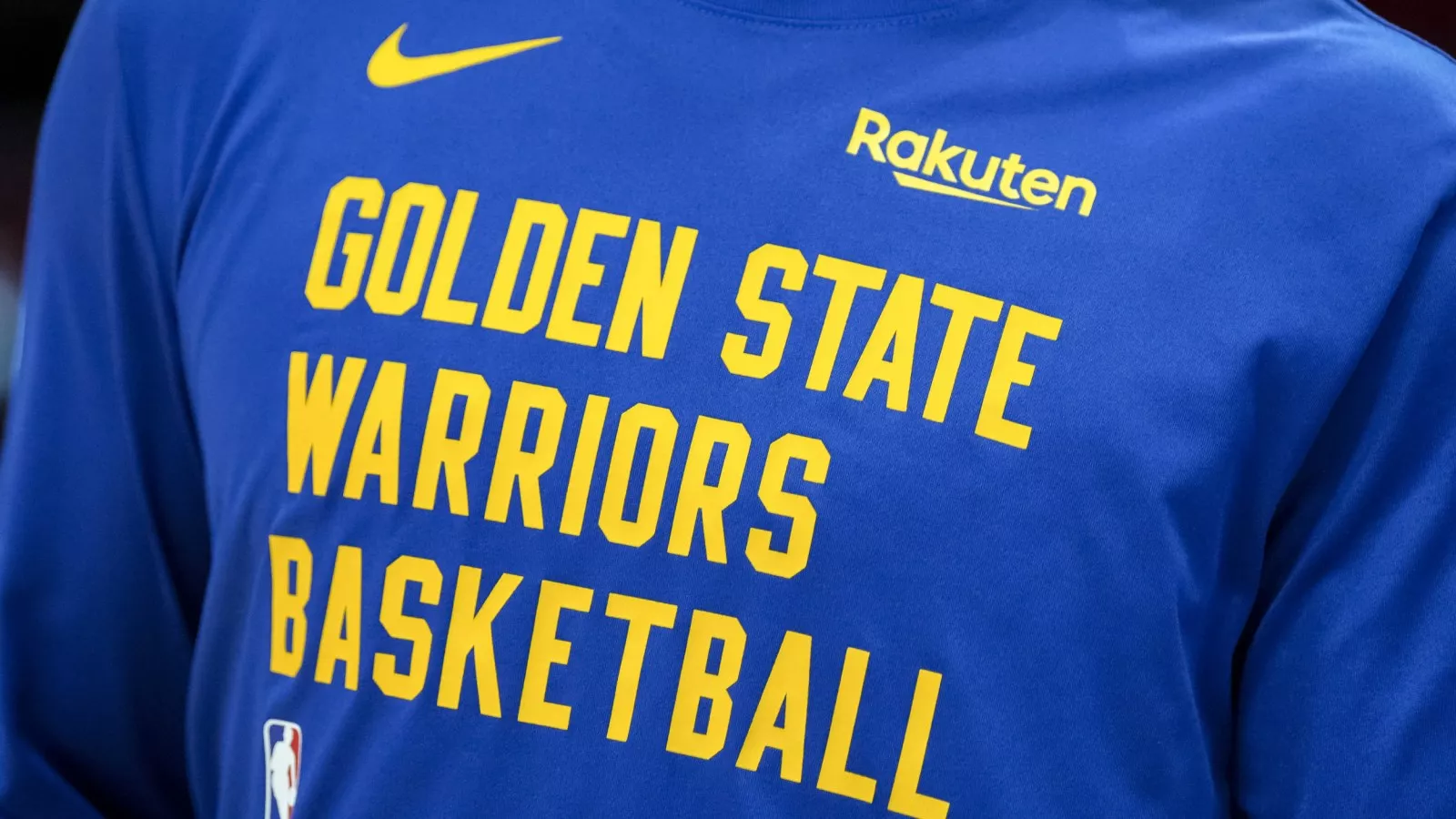
If you take the 10,000-foot view of NBA history, you’ll see it growing less dynastic over time. The league’s early history was dominated almost entirely by two teams. The Minneapolis Lakers won five championships in six years, and then the Boston Celtics won 11 in 13, including eight in a row. Neither feat has ever been matched. Fast forward to the 1980s. No single superpower owned that decade completely, but it was dominated, again, by the Lakers and Celtics. Every NBA Finals in that decade included one of them. In total, only five teams reached the Finals in the ’80s: the Lakers, Celtics, 76ers, Rockets and Pistons.
The 1990s were dominated by a single team, the Chicago Bulls, but they at least tended to face different opponents in the Finals most years. In total, 13 teams reached the Finals in that decade. The Bulls won six championships spread across two three-peats. The Lakers quickly followed the Bulls up with a three-peat of their own, but the NBA hasn’t seen one since. In fact, the NBA has had only three repeat champions since that Laker run ended. The Lakers (again), Miami Heat and Golden State Warriors each won two in a row. That’s three repeat champions in 23 years. For reference, the 23 years before that Laker run featured five different repeat champions.
This trend line isn’t just evident on the team level. You can see it in individual players as well. Think of the most successful players from each era of NBA history. Bill Russell won 11 championships. Nobody will ever touch that figure again, and you know that instinctively. Michael Jordan and Kareem Abdul-Jabbar won six. Kobe Bryant and Tim Duncan won five. LeBron James and Stephen Curry won four. What sounds likelier: that the best players and teams are getting worse with time, or that winning is getting harder and harder? With each passing generation, the ceiling seems to get lower. Stringing together multiple championships gets harder and harder. This is NBA history.
But lately, the slow march toward parity has become a sprint. On Sunday, the Oklahoma City Thunder eliminated the Denver Nuggets from the 2025 postseason. The Nuggets were the 2023 champion. The 2019 champion Raptors missed the playoffs. Our champions from 2020 (the Lakers) and 2021 (Bucks) were eliminated in the first round, while the 2022 (Warriors) and 2024 (Celtics) champs were knocked out of the second round alongside the Nuggets. That means that the 2025 champion will be the seventh different team to win it all in the past seven years. The NBA has never gone seven-for-seven with unique champions before. Meanwhile, none of those first six champions even made it out of the second round in their title defense season.

What’s been responsible for the shift away from dynasties?
That’s a complicated question without an easy answer. The 2023 collective bargaining agreement is obviously a long-term culprit, but it has been in effect for only two seasons. We can’t blame a seven-year trend on it.
Another common answer at least fits our timetable: the change in commissionership back in 2014. A common joke tossed around during the David Stern era was that the former commissioner’s dream NBA Finals would be the Lakers against the Lakers. Adam Silver’s messaging has been very different. “Anybody running a league wants to see not necessarily in my mind parity on the floor every year, but parity of opportunity,” Silver said in 2022. “You also want a system where the best players, the best-managed teams can also excel.”
The Silver era has certainly been defined in part by efforts to level the playing field. He has overseen two CBA negotiations that took steps in that direction, instituted the Play-In Tournament to encourage more competition in the middle of the standings, and flattened the lottery odds to discourage tanking at the bottom. Silver’s vision of a healthy NBA probably includes a number of different champions. But the things that are actually creating these different champions are largely out of a commissioner’s control.
To figure out what’s actually happening here, we have to look at what these teams actually had in common. The easiest answer here was how they built their rosters.
Three of our six champions won their titles in the immediate aftermath of trading multiple first-round picks for a veteran. The Lakers got Anthony Davis. The Bucks got Jrue Holiday. The Celtics also got Jrue Holiday. A fourth, the Nuggets, traded a first-round pick and a player that they had recently used a first-round pick on (RJ Hampton) to get Aaron Gordon. They didn’t win with him immediately, but they did win in their first season with a healthy roster around him. A fifth, the Raptors, also traded for a star in Kawhi Leonard. They didn’t have to give up multiple picks to do so, but that was only really the case because he was an impending free agent. They paid for only a single year and then lost their star afterward.
These teams all also tended to rely on older players. Three 2019 Raptors starters, Kyle Lowry, Marc Gasol and Danny Green, were in their 30s. Of the 10 players the 2020 Lakers used in their playoff rotation, seven were in their 30s, and their best player, LeBron James, was 35. Holiday and Brook Lopez were both in their 30s for the Bucks. Stephen Curry, Draymond Green and Klay Thompson were for the Warriors.
What we’re broadly seeing here is that these teams are poster-boys for the all-in era. The Lakers were built entirely through blockbuster moves. The Raptors got their best player through one. The Nuggets, Bucks and Celtics all drafted their best players, but each made aggressive moves for veterans to make short-term pushes. The Warriors did so indirectly. While their 2022 team didn’t include a glitzy addition, the 2017 and 2018 teams obviously did in Kevin Durant. Even if Durant wasn’t on the team in 2022, the Warriors benefitted significantly, if indirectly, from his former presence because it was his salary slot that eventually absorbed Andrew Wiggins, who was arguably the second-best player on that team. These are all teams that gambled big on the player movement that has defined the past 15 years or so of NBA history and won.
This matters for two important reasons. The first is, well, volume. These star-studded teams had to compete against each other. Your all-in trade might position you to contend, but that does nothing to prevent another team from making a similar move. Perhaps in theory one of those teams could have made a move that was obviously superior to all of the others and built a dynasty as a result, but the fact that no one did feeds into our second point: cost.
The price for superstar or even high-end starter acquisitions has never been higher because so many teams are desperate to land such players now. Demand has vastly outpaced supply, especially where younger stars are concerned. The Lakers paid a fortune to get Davis both because of his talent and because he was only 26 when he was traded. Holiday cost quite a bit as well, but less because he was older at the time of his acquisition. Golden State’s best players were homegrown, but the Warriors were paying them top-dollar. Even with what was then the highest payroll in NBA history, that still left them precious few resources remaining to build out the rest of their roster.
That is an essentially component of this champion turnover. The price of going all-in as these teams did was that it cost them depth and maneuverability. The Warriors lost key reserves Gary Payton II and Otto Porter after the 2022 Finals. The Bucks lost P.J. Tucker. The Raptors slowly bled until, years later, their entire championship core was gone. These were all pre-2023 CBA champions, and remember, once you’ve traded all of your picks, you can’t do that again.
Part of the reason the Lakers struggled so much to unload Russell Westbrook was that they spent all of their picks getting Davis. The Bucks spent all of their assets on stars in Holiday and eventually Damian Lillard, but that left them very little draft capital to spend on depth and defense. The Nuggets saw this problem coming and tried to solve it preemptively by trading their meager remaining future draft capital for immediate, lower-value picks. The idea was that they could simply draft their depth and keep it cheap instead of paying market-value for it in trades or free agency. This is a great idea if the players you draft are good. Sadly, for Denver, they haven’t been, and that has left the Nuggets without assets to trade for veterans to compensate. Essentially, they lost key 2023 role players Kentavious Caldwell-Pope, Bruce Brown and Jeff Green because they thought they could replace them internally, but ultimately couldn’t.
So why is all of this preventing repeat champs?
Well, because depth and maneuverability have never been more important for one, sad reason: health. It is just far rarer for NBA teams to remain healthy across four rounds of the playoffs today than it used to be. There is data to support this, courtesy of Lev Akabas. Between 1994 and 2018, there were only three seasons in which five All-Stars missed a game due to injury. In that span, the number never got higher than five. Since 2019, however, every postseason has featured at least five All-Stars missing a game, and that number got as high as 10 in 2021.
So, who was our defending champion in 2021? That would have been the Lakers. As you’ll recall, they were in control of their first-round series against the Phoenix Suns until Anthony Davis strained his groin. A year later, the defending champion Bucks pushed the Celtics to a Game 7 despite playing their entire second-round series without Khris Middleton. Almost every member of this year’s Celtics either entered the playoffs injured or got hurt as the postseason progressed, including Jayson Tatum tearing his Achilles. The Nuggets might have beaten the Thunder if Michael Porter Jr. had two healthy arms.
Injuries are obviously out of a team’s control, but you know what helps teams overcome them? Depth. Youth. Maneuverability. Having a bench makes it possible to survive a few games or a series without a key player. Younger players are likelier to improve enough to help fill the void left behind either by injured players or by ones lost in trades or free agency. Having assets available to trade means, at least after a postseason loss, you can address what went wrong and try again next season. But these teams tend to lack at least one of those things, if not all of them. They’re often built around older players who have gotten worse after winning the title, not better. They’re thinner for having pushed for that championship, and they lack the assets to fix that.
Put all of this together and it seems as if we have a reasonable explanation here. At least so far, what we’re seeing has less to do with enforced parity on the part of the league than it does the aggressive roster-building that has become a staple of this era of NBA history. That roster-building style creates a number of viable, championship-caliber teams at any given time, but it also makes each of those teams more vulnerable to immediate degradation. That, coupled with the frequency of postseason injuries in the modern NBA, is making it harder than ever to win multiple championships with the same core. Besides, as we’ve covered, this is the natural progression the sport has been on for eight decades. The arc of history bends away from dynasties.
But just because it has slowly bent away from dynasties doesn’t mean it doesn’t include them. This is the question on everybody’s mind right now: is the dynasty dead?
Is this level of parity the new norm?
Again, there isn’t an easy answer. There is compelling evidence to believe that the answer could be yes. We’ve touched on the 2023 CBA, but only now are teams truly beginning to understand its effects. Keeping a team together for more than a few years is harder than it is has ever been. Injuries aren’t going away either. As Akabas noted, NBA players are covering about 9% more distance than they did a decade ago. The modern incarnation of this sport is putting more literal mileage on the bodies of players. That is probably leading to more injuries, and there’s no obvious solution to that. Champions coming off of four-round postseason runs are theoretically more susceptible to those injuries than other teams. Injuries will always be a possible dynasty-slayer.
However, if we treat this recent parity as more of a roster-building phenomenon than some sort of league-wide initiative, we have to look at where roster-building is going before we assume that the current state of affairs is permanent. While the all-in era has hardly ended, it also now concurrently exists alongside what I call the “all-out” era.
What does that mean? Well, when one team goes all-in, the team they’re trading with, therefore, is going all-out. For a few years, that team is obviously going to be bad or else it wouldn’t have given up their stars in the first place. But eventually, that team gets good again, and it does so in a much more sustainable way.
Think about the Thunder. The Clippers went all-in on Paul George. That got the Thunder Shai Gilgeous-Alexander and a trove of draft picks. They’ve used some of those draft picks (most notably on Jalen Williams), but they’ve also been able to hoard and trade others while using their own picks to land core pieces (Chet Holmgren most notable among them).
When a team goes all-in, the point is to win right away. When a team goes all-out, however, the point is to win later. Patience, in this case, is a virtue. Think about those pitfalls we covered earlier. Age, obviously, is not a problem for the Thunder yet. Gilgeous-Alexander is 26. Alex Caruso is the only player in their playoff rotation who is older. Depth isn’t an issue either. The Thunder have used 10 players this postseason and most of them could credibly start on other teams. Maneuverability is how they will dodge these problems moving forward. The Thunder have accumulated so many draft picks that, once their role players get older and expensive, they can cycle them out and replace them with cheap, young newcomers.
The Thunder are the forebears of this impending “all-out” era, but there are other such contenders coming. The Rockets and Spurs check similar boxes: they are young, they are talented, they are still cheap and they’ve amassed a considerable amount of draft picks to use for either short- or long-term maintenance. In a perfect world, these teams would be able to win while remaining all-out. However, if the need to go all-in ever arises, they have the means to do so without gutting the rest of their rosters because of all of the spare assets they’ve accumulated.
Now, obviously, these teams face one similar road block to the all-in teams: they have to compete against one another. The Thunder are at the front of the line for now, but so long as several of these teams exist, building a dynasty while battling the others isn’t going to be easy. But think back to all of that history we covered at the top of this piece. The NBA was already, even if glacially, becoming less dynasty-friendly. We might need to accept that our old ideas of what constitutes a dynasty had already become outdated. That doesn’t mean we can’t land on a new definition.
Nobody ever proclaimed the death of the dynasty when the Jordan-era Bulls barely won half as many championships as the Russell-era Celtics. They accepted that what the Celtics did would have been impossible to replicate decades later. And that’s where we are now. At this stage of NBA history, the notion of a star player or a team ever winning five or six championships over a sustained run, or perhaps even three in a row, might just not be feasible. However, we will almost certainly see one or more of these all-out teams break the current streak of seven new champions in a row.
When the dust settles on this new era of NBA history, Gilgeous-Alexander or Victor Wembanyama or one of their contemporaries will likely stand above his peers as the defining winner of this generation. That just might mean, say, three or four championships instead of five or six. That would not make them or their teams inherently inferior to those who racked up gaudier ring counts in their day. It would just reflect the consistently shifting nature of the NBA.



